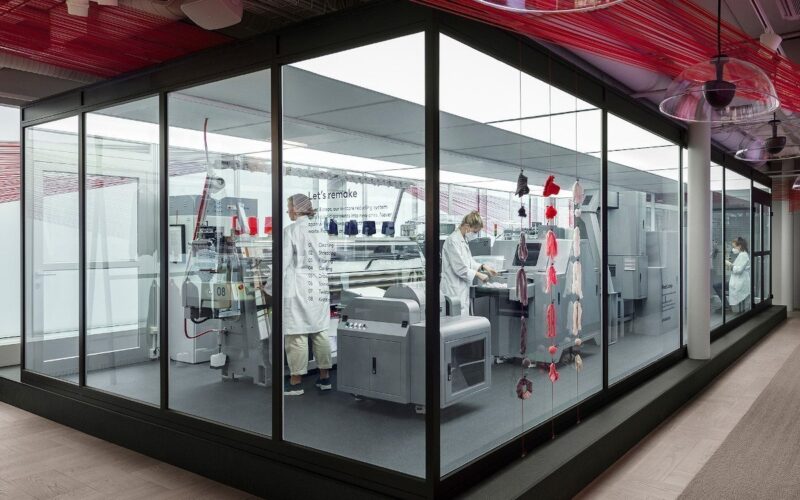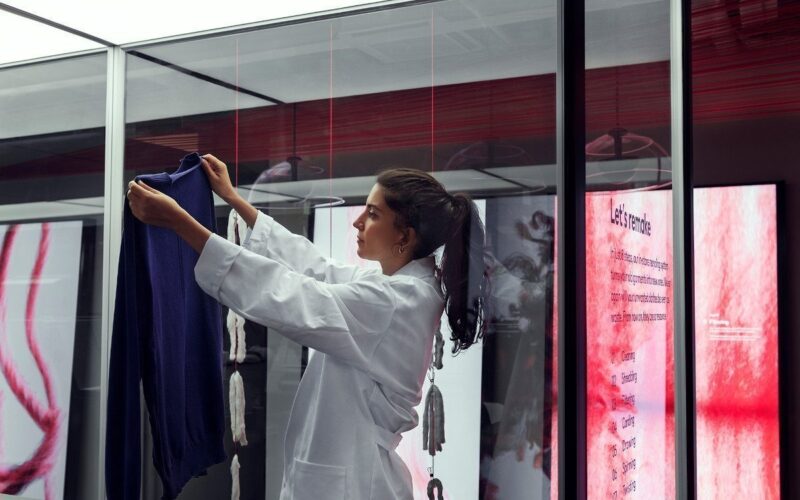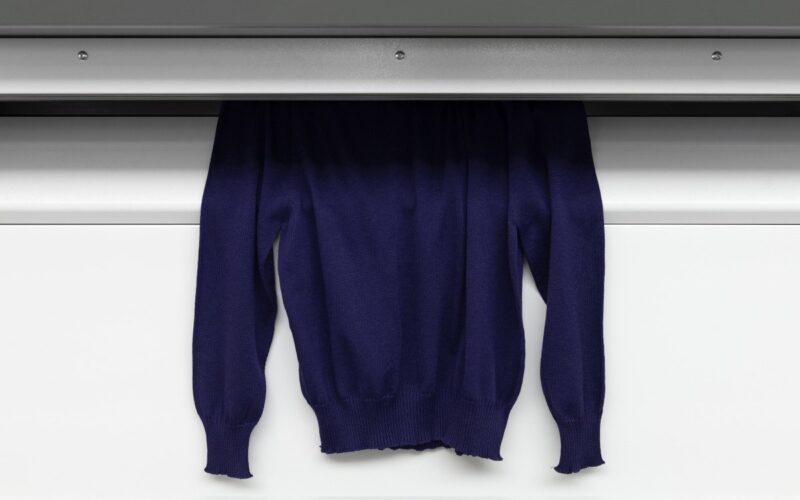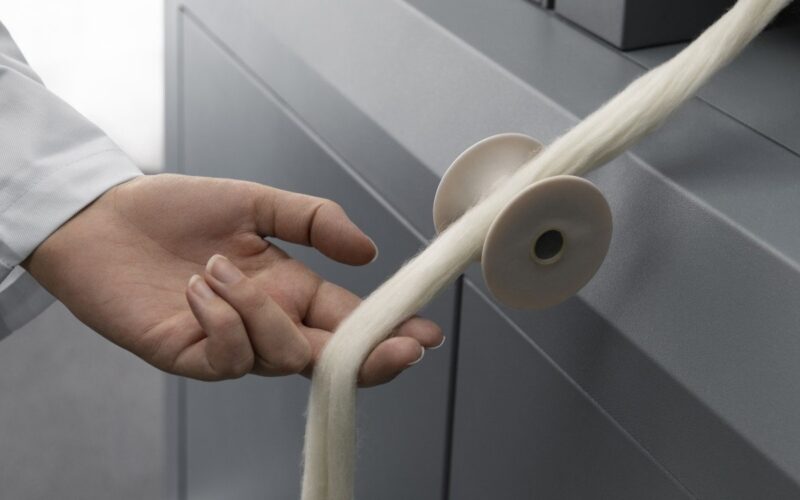In 2020, H&M started trying to recycle clothing directly inside its Stockholm flagship store. The program called Looop enabled H&M to both transform old pieces into new fashion favorites and provide a higher level of storytelling. To this day, the display-equipped glass laboratory remains a role model project - even if it's expensive to replicate.

Recycling at H&M: Maintaining the Cycle
Circular economy is one of the keywords of our time. Simple recycling like transforming used-garments into playground tiles – usually downcycling – is no longer sufficient. The new aim is to increasingly produce equivalent materials in the recycling process. Glass bottles are turned into new glass bottles and worn fast-fashion garments should ideally be transformed into new fashion articles. H&M, in partnership with a Hong Kong company, is not there yet, but they have made significant progress in recycling short-lived fashion with their Looop initiative.
In 2020, H&M began offering customers in Sweden the chance to turn unwanted garments into new fashion favorites using their garment-to-garment recycling system called Looop. Fast-fashion has an increasingly bad reputation which H&M wants to combat by closing the loop. One of the initiatives towards that goal was clearing the second floor of its Stockholm flagship store for a glass container full of recycling machines. Large-format digital signage displays visualized offered visualizations of the recycling process, along with explanations of the value of old garments.
New yarn instead of playground tiles
Looop opened on October 12, 2020, in the H&M store on Drottninggatan in Stockholm, during the pandemic. It was the first time a fashion retailer integrated a live garment recycling system in a store. Customers could watch as the container-sized machine recycled their old garments into something new.
The initiative is part of H&M’s larger goal to become fully circular and climate-friendly. Achieving this requires developing new materials and processes while encouraging customers to use their garments for as long as possible. Looop was created by the non-profit H&M Foundation in collaboration with research partner HKRITA (The Hong Kong Research Institute of Textiles and Apparel) and the Hong Kong-based yarn spinner Novetex Textiles.
“We are constantly researching new technologies and innovations to transform the fashion industry, as we work to reduce dependence on new resources. Getting customers on board is key to achieving real change and we are so excited to see what Looop will inspire,” said Pascal Brun, Head of Sustainability at H&M.





Looop uses a technology that involves shredding old garments and reassembling them into new ones. The garments are cleaned, shredded into fibers and spun into new yarn, which is then used to create new fashion pieces. During the process, virgin yarn must also be added to the recycled materials. The proportion of fresh yarn is to be kept as low as possible. The system uses no water or chemicals and thus has a significantly lower environmental impact than textiles made from new materials.
In contrast to competitors such as Inditex or Uniqlo, H&M has come relatively far. The retailer has been collecting used clothing in-store since 2013. Today, most fast-fashion brands provide that service. With Looop, the Swedish fashion retailer went a step further. For 100 Swedish kronor (around 10 euros), members of the H&M loyalty club could use the recycling machine. For non-members, the fee was 150 Swedish kronor. All proceeds went to material research projects. By 2030, H&M aims at either recycling 100 percent of its materials or source them in a more sustainable way. In 2019, the figure was 57 percent.
Thoughtleader and innovator H&M – new EU regulation will require more responsibility
The instore recycling initiative Looop is no longer showcased inside the flagshipstore in Stockholm. But H&M keeps developing new processes to recycle used-garments into yarn instead of downcycling. Also, new EU-regulations becoming effective January 2025 require companies to collect textiles separately. In fact, almost two thirds of all textiles in the EU currently end up in household waste. As part of the Extended Producer Responsibility (EPR) regulation, textile companies in the EU will also need to assume responsibility along the entire value chain of their products. This is intended to reduce textile waste by reselling or recycling clothing rather than disposing of it, burning it or exporting it.
In this episode of invidisXworld, invidis went to H&Ms flagship store to check out Looop in person:
